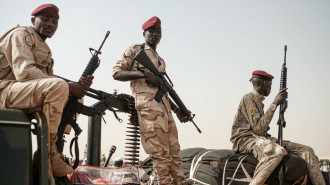Dozens die crossing Mediterranean making 2016 deadliest year yet
French aid group Doctors Without Borders (MSF) said that its chartered rescue ship found 25 bodies aboard the boat, 26 nautical miles off the coast of Libya.
The discovery brings the total number of deaths to 3,800 according to the UN – over the 3,771 reported for the whole of 2015.
"The mixture of water and fuel was so foul that we could not stay on the boat for long periods. It was horrible," MSF project leader Michele Telaro said in a statement.
A statement from the charity said the people, found on the boat's floor – flooded with a toxic mixture of fuel and seawater – most likely died from suffocation, burns or drowning.
MSF's rescue vessel, the Bourbon Argos, was alerted to the dinghy in the southern Mediterranean, and picked up 107 passengers.
The crew initially found 11 corpses on the floor of the boat.
They were then called away to a rescue operation nearby, saving 139 people aboard another boat, before returning to find a further 14 corpses.
The bodies were retrieved over a number of hours, with the help of a team from the German NGO Sea-Watch.
Record high
Deaths of refugees crossing the Mediterranean so far this year have hit a record high, the UN has said.
A total of 3,800 lives had been lost so far in 2016.
"This is the worst we have ever seen," William Spindler, spokesman for refugee agency UNHCR has said.
"From one death for every 269 arrivals last year, in 2016 the likelihood of dying has spiralled to one in 88."
Spindler said the high loss of life takes place despite a large overall fall this year in the number of people seeking to cross the Mediterranean to Europe.
Last year at least 1,015,078 people made the crossing. This year so far, crossings stand at 327,800.
"Between Libya and Italy the likelihood of dying is even higher, at one death for every 47 arrivals," he added.
Flimsy inflatable rafts
The causes of the increase are multiple, UNHCR said. About half those who have crossed the Mediterranean so far this year have travelled from North Africa to Italy – a more perilous route.
"People smugglers are today often using lower-quality vessels – flimsy inflatable rafts that often do not last the journey. Several incidents seem to be connected with travel during bad weather," Spindler said.
However, he added that the tactics of smugglers were switching too, with "mass embarkations of thousands of people" at a time occurring on several occasions.
"This may be to do with the shifting smuggler business model or geared towards lowering detection risks, but it also makes the work of rescuers harder," he said.
Making regular pathways for refugees to reach safety more available needs much greater and urgent attention, Spindler added.
Such means include enhanced resettlement and humanitarian admissions, family reunification, private sponsorship, and humanitarian, student and work visas for refugees.
![Migrants in the Mediterranean [AFP] Migrants in the Mediterranean [AFP]](/sites/default/files/styles/large_16_9/public/media/images/5807ED6D-4FF4-438B-9EA8-BA2EE7D2B6C7.jpg?h=d1cb525d&itok=A0mHiAwg)






 Follow the Middle East's top stories in English at The New Arab on Google News
Follow the Middle East's top stories in English at The New Arab on Google News
![Lebanon after strikes [Getty]](/sites/default/files/styles/image_330x185/public/2184409977.jpeg?h=a5f2f23a&itok=7wpfQMyI)
![G20 Brazil [Getty]](/sites/default/files/styles/image_330x185/public/2184389194.jpeg?h=a5f2f23a&itok=t1DchCMY)
